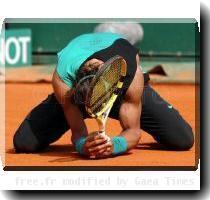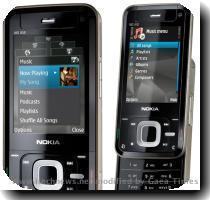World No. 1 mobile phone maker Nokia fights to stay on top amid challenge from US rivals
By Matti Huuhtanen, APFriday, February 19, 2010
Nokia fighting to stay No. 1 as US challenge grows
HELSINKI — Nokia Corp. may be the world’s top cell phone maker, but it’s no longer a trendsetter, as a host of inventive and alluring technologies from North America is shifting the center of gravity in the cellular universe away from Europe.
Despite efforts to boost its position in the U.S., Nokia is struggling to compete with Cupertino, California-based Apple Inc. — maker of the iPhone — and Canadian smartphone maker Research in Motion, which makes the BlackBerry.
“There has long been a steady stream of North American firms attacking Nokia and they are likely to encourage others, such as Amazon, to follow suit,” said Neil Mawston from Strategy Analytics. “The intensity of competition can really only get tougher.
Innovation is where Nokia has faltered, experts say. After much hype, its N-Gage online game flopped. And it’s been slow to catch on to market trends, from folding “clamshell” handsets to phones with sliding tops and touch screens. It was forced to quickly ship models with those features to markets.
In October, it launched its first laptop, a netbook with a 10-inch screen that runs on Microsoft Corp.’s Windows 7 software. It also has introduced touch-screen handsets that unmistakably resemble the popular iPhone.
Nokia’s chief executive Olli-Pekka Kallasvuo concedes the Finnish company is under pressure.
“There is no doubt the center of mobile innovation has shifted from Europe to Silicon Valley. We are working to tap into this innovation,” Kallasvuo told analysts earlier this month. He said Nokia had installed more than 3,300 employees in North America to redress the balance.
When Kallasvuo took over as CEO in 2006, he announced that a top priority for Nokia would be to improve its performance in the U.S. market, but success has been elusive. Sales volumes in North America plunged more than 7 percent in the last quarter from a year earlier to 3.8 million devices, which does little for the company’s image in the region.
Innovation in the mobile industry is now driven by recent entrants such as Apple and Mountain View, California-based Google, and analysts are wondering how long Nokia can remain at No. 1.
Mawston said the handset market has been “Americanizing” since 2004, when Motorola broke through with its ultra-slim Razr. Others followed, such as the BlackBerry, iPhone and smart phones with Google’s Android operating system.
Nokia’s Symbian interface operating system had a 47 percent market share of all smart phones at the end of 2009, according to Canalys market research. Next was BlackBerry at 21 percent, but newcomer Apple’s iPhone software brought a challenge, grabbing 15 percent.
Analysts say Symbian is behind the times, looking tired compared to Android and iPhone software.
This week at the industry’s largest trade show — the Mobile World Congress in Barcelona — Nokia announced the next step in its partnership with Intel Corp., saying they’re combining the software they’ve been developing separately for new high-end smart phones. Nokia’s Maemo and Intel’s Moblin will together be known as MeeGo.
The combination will strengthen Nokia in the struggle to define the future of smart phone software, but Intel is not yet a major mover in that category.
Competitor Sony Ericsson brought some new Symbian phones to the Barcelona show, but is hedging its bets by making Android sets as well.
Though Nokia may no longer be the industry weather vane it’s still the global market leader. Four of 10 mobile devices sold worldwide are Nokia handsets. In the fourth quarter of 2009 it shipped 127 million handsets — up 12 percent on a year earlier and 17 percent on the previous quarter — selling more phones than its three biggest rivals combined.
Its fourth-quarter net profit rose 65 percent to euro948 million ($1.3 billion).
Even in the smart phone segment, Nokia has seen its market share grow from 35 percent to 40 percent despite strong competition from BlackBerry and iPhone.
“Nokia has their challenges. But don’t ever underestimate them. They are still selling 500 million phones (a year),” said John Strand, a telecom analyst of Strand Consult.
In a remarkable transformation, Espoo, Finland-based Nokia started making rubber boots and then moved into home electronics before becoming a pioneer in the wireless industry in the 1980s. Together with Sweden’s LM Ericsson it helped make Europe a leader in mobile phone technology.
Both companies remain big players. Ericsson is a world-leading maker of wireless network equipment, but its joint handset venture with Japan’s Sony Corp., Sony Ericsson, lost ground to U.S. and Asian rivals.
Strand said that Nokia — and Europe’s mobile industry — was coming under pressure not just from the U.S., but from Asia, where China’s Huawei is gaining ground in the network infrastructure market and Taiwan’s HTC, South Korea’s Samsung and LG Electronics are tough competitors in cell phones.
“If Europe wants to have a role in this industry in the future we have to wake up,” Strand said. “We need more innovative people.”
As cell phone markets have become saturated, Nokia increasingly has turned to providing more services, such as music and video downloads, navigational maps and games, in a global online market it estimates will reach euro100 billion this year. By the end of 2011 it expects some 300 million active users.
In a 2008, Nokia bought U.S. navigation-software maker Navteq Corp., a major provider of digital map data and content, in an euro8 billion deal, and last month announced it would provide free downloads of its Ovi Maps application for Nokia users.
In Barcelona, Nokia said that more than 1 million applications were being downloaded daily from its Web store. By comparison, Apple sees about 10 times as many application downloads a day.
Kallasvuo believes that big is beautiful.
“I see great opportunity for Nokia to capture new growth in our industry by creating what we expect to be the world’s biggest platform for services on the mobile,” he said.
_____
Associated Press Writer Karl Ritter in Stockholm and AP Technology Writer Peter Svensson in Barcelona contributed to this report.
Tags: Asia, Consumer Electronics, East Asia, Europe, Finland, Geography, Helsinki, North America, United States, Western Europe

